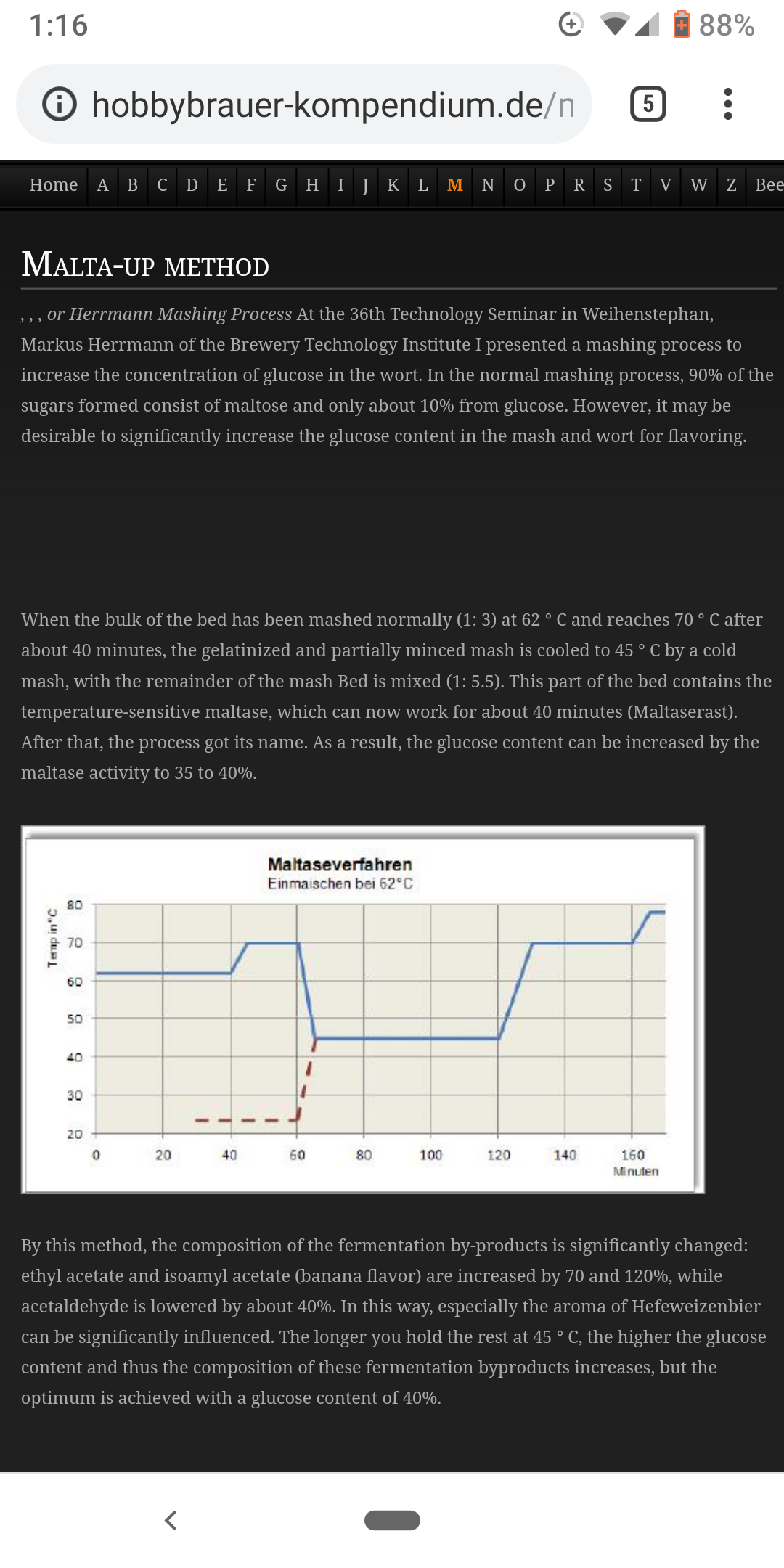RPh_Guy
Bringing Sour Back
I want the highest possible fermentability/attenuation.He's most probably talking about a Hochkurz mash. What do you want to achieve? Lower temperature yields a higher fermentable wort, but you need to hold it for a long time since enzymes work slower at lower temperatures, and they do also denature over time, even at lower temperatures. And not all of the potential starches become soluble at lower temperature. If you want to do it simple within a pretty "normal" timeframe, just hold 65C, it's most efficient. If you want high attenuation and efficiency you should step through the limit dextrinase area, low sacc area, higher sacc, then mashout. This takes time.
Timeframe and efficiency don't matter.




